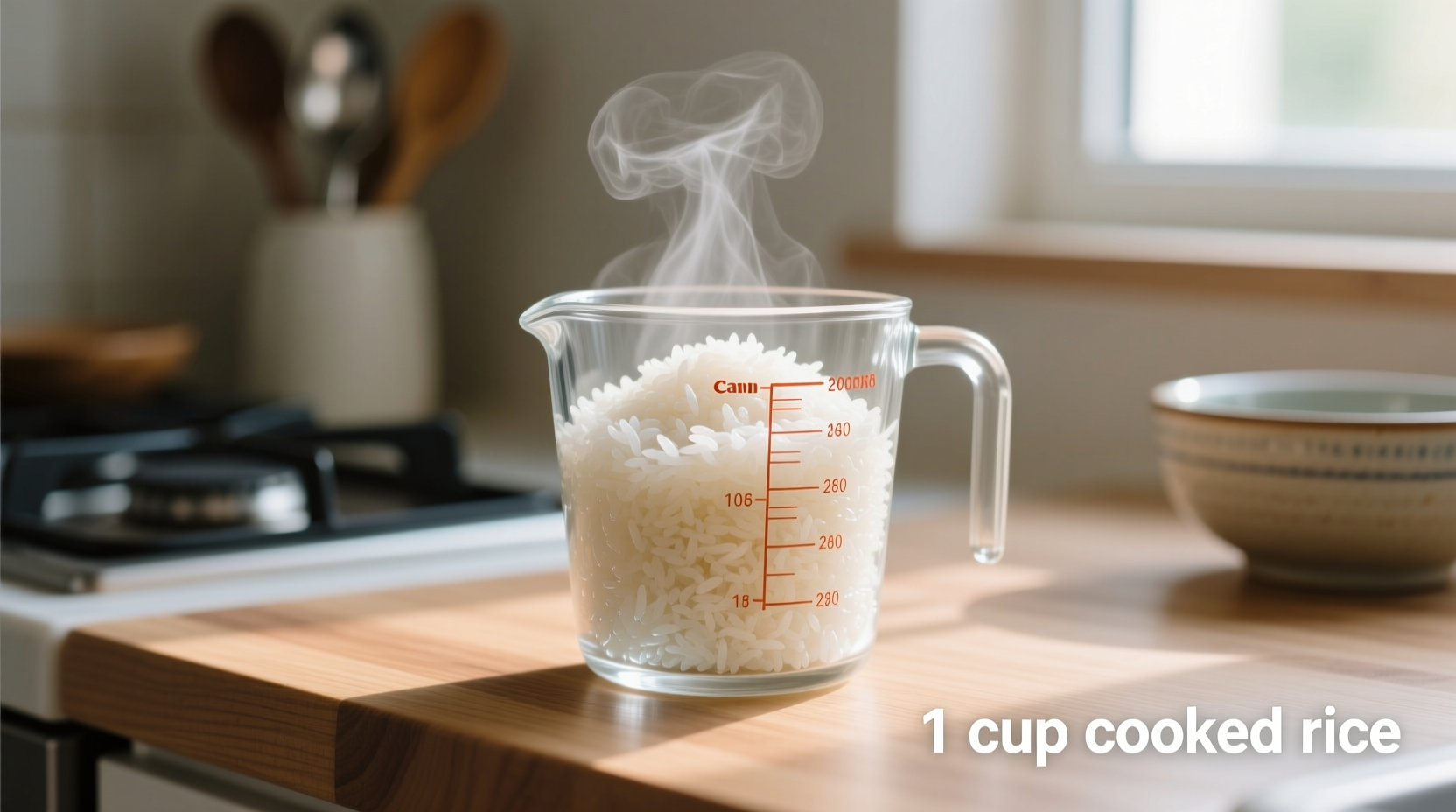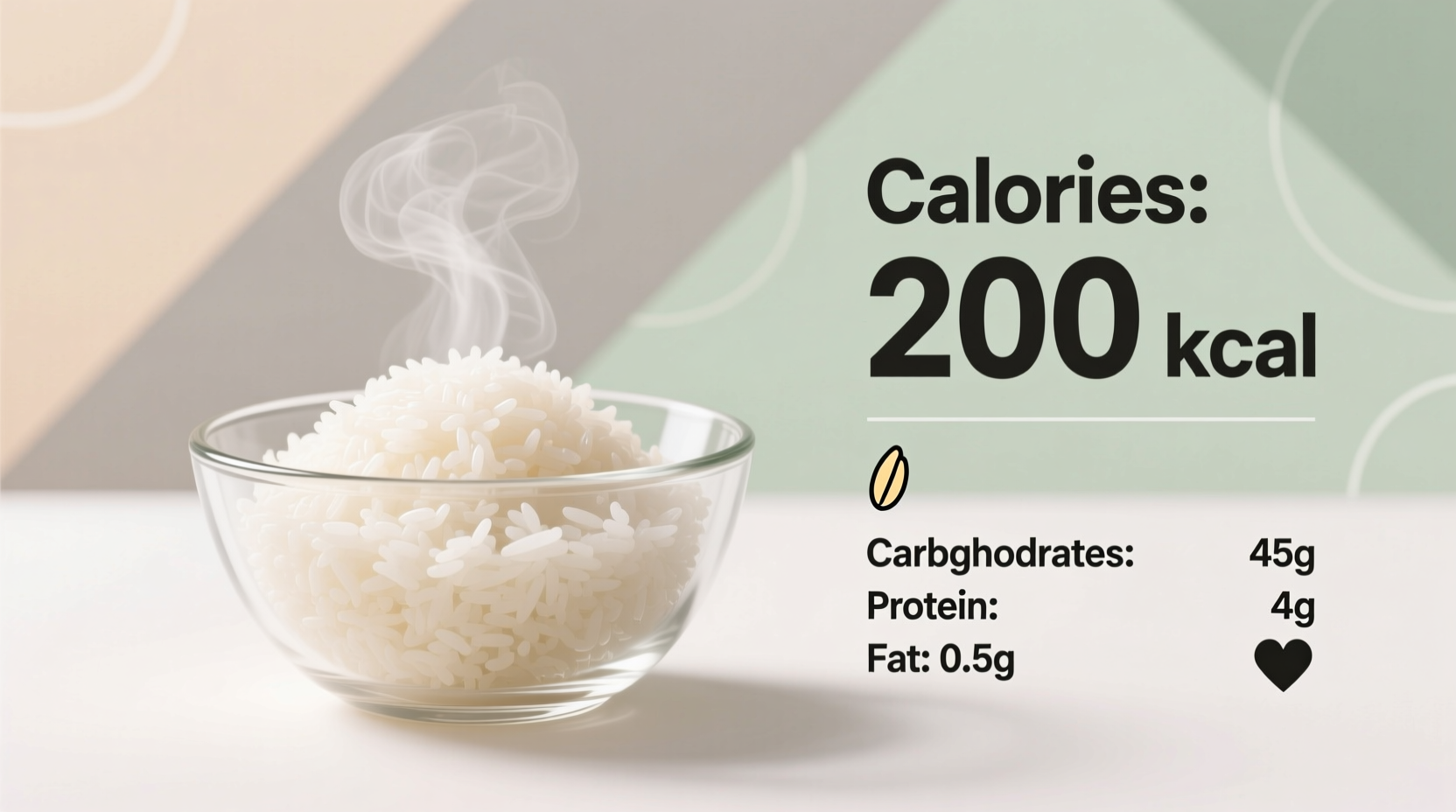Understanding the exact calorie content of rice is essential for meal planning, weight management, and dietary tracking. Whether you're counting macros, following a specific diet, or simply curious about your favorite staple food, knowing precise nutritional information helps make informed choices in your daily eating habits.
Exact Calorie Counts by Rice Type
Not all rice is created equal when it comes to calorie content. The variety, processing method, and even growing conditions affect the final nutritional profile. Here's a detailed breakdown of common rice types measured in a standard cooked cup (approximately 195 grams):
| Rice Type | Calories per Cooked Cup (195g) | Carbohydrates (g) | Protein (g) | Fiber (g) |
|---|---|---|---|---|
| White rice (long-grain) | 205 | 45 | 4.3 | 0.6 |
| Brown rice (long-grain) | 218 | 45 | 5 | 3.5 |
| Jasmine rice | 210 | 46 | 4 | 0.7 |
| Basmati rice | 210 | 45 | 4.2 | 0.8 |
| Wild rice blend | 166 | 35 | 6.5 | 3 |
Data sourced from the USDA FoodData Central database, the most comprehensive and regularly updated nutritional resource maintained by the United States Department of Agriculture.
Why Calorie Counts Vary Between Rice Types
The calorie differences between rice varieties stem from their processing and natural composition. White rice undergoes milling that removes the bran and germ, resulting in slightly fewer calories but also fewer nutrients. Brown rice retains its whole grain structure, containing more fiber and nutrients but slightly more calories per serving.
When rice cooks, it absorbs water and expands, which affects the calorie density. One cup of uncooked rice (about 185g) yields roughly three cups of cooked rice. This expansion explains why cooked rice has fewer calories per cup than uncooked rice.

Factors That Change Rice Calorie Content
Several variables influence the final calorie count in your cooked rice:
Cooking Method Matters
The water-to-rice ratio significantly impacts the final calorie density. Using more water creates fluffier rice with slightly lower calorie concentration per cup, while less water produces denser, potentially higher-calorie rice. Professional chefs often use a 1.5:1 water-to-rice ratio for perfect texture without altering nutritional content substantially.
Resting Time After Cooking
Letting rice rest covered for 10-15 minutes after cooking allows for complete water absorption, which stabilizes the final volume and calorie count. Skipping this step can result in inconsistent measurements.
Rice Age and Storage Conditions
Older rice grains absorb more water during cooking, potentially lowering the calorie density per cup. Properly stored rice maintains more consistent cooking properties and nutritional values.
Practical Portion Guidance for Calorie Counting
Accurate measurement is crucial for reliable calorie tracking:
- Use a standard 8-ounce (240ml) measuring cup, not a drinking cup
- Measure rice after cooking for accurate calorie counting
- Level off the top with a straight edge for consistent portions
- Consider that restaurant portions often exceed standard cup measurements
For those tracking calories precisely, weighing cooked rice on a digital kitchen scale provides the most accurate measurement, as volume can vary based on how tightly the rice is packed.
Beyond Calories: The Complete Nutritional Profile
While calorie count is important, understanding the full nutritional picture helps make better dietary choices. Rice primarily provides carbohydrates but also contains other valuable nutrients:
- White rice offers quick energy with easily digestible carbohydrates but has lower fiber content
- Brown rice contains more fiber, magnesium, and B vitamins due to its intact bran layer
- Wild rice blends provide the highest protein content among common rice varieties
According to research published by the National Institutes of Health, substituting brown rice for white rice can contribute to better blood sugar control and provide more sustained energy release.
Smart Strategies for Managing Rice in Your Diet
Rice can absolutely fit into a balanced diet when approached strategically:
- Mix white and brown rice for a middle ground of texture and nutrition
- Add vegetables directly to rice dishes to increase volume without significant calorie increase
- Cool cooked rice before eating to increase resistant starch content, which has lower caloric availability
- Use broth instead of water for cooking to add flavor without extra calories
Dietitians often recommend pairing rice with protein sources and vegetables to create balanced meals that keep you satisfied longer. The USDA's MyPlate guidelines suggest making half your plate vegetables, one quarter protein, and one quarter grains like rice for optimal meal composition.
Common Questions About Rice Calories
Does rinsing rice before cooking affect calorie content?
Rinsing rice removes surface starch but has minimal impact on overall calorie content. The primary effect is on texture rather than nutrition. Any calorie difference would be negligible—less than 5 calories per cup—since the removed starch represents a tiny fraction of the total carbohydrates.
How do I measure a cup of cooked rice accurately?
For accurate measurement, use a standard 8-ounce (240ml) measuring cup. Spoon cooked rice into the cup without packing it down, then level off the top with a straight edge. For precise calorie counting, weighing 195 grams of cooked rice on a kitchen scale is even more accurate than volume measurement.
Does cooling cooked rice reduce its calorie content?
Cooling cooked rice increases resistant starch content, which your body partially resists digesting. Research from the Journal of Cereal Science shows this can reduce the effective calorie availability by approximately 10-15%. However, the total calorie count listed on nutrition labels remains the same.
How many calories are in restaurant-style fried rice?
Restaurant fried rice typically contains 300-400 calories per cup due to added oil, eggs, and sometimes sugar. Homemade versions can be lighter at 250-300 calories per cup when prepared with minimal oil and plenty of vegetables. The calorie difference primarily comes from cooking fats rather than the rice itself.
Is microwave-cooked rice different in calories from stove-top rice?
The cooking method doesn't change the calorie content if you use the same rice-to-water ratio. Microwave cooking might result in slightly different texture, but the nutritional profile remains consistent as long as the final cooked volume and moisture content are similar.











 浙公网安备
33010002000092号
浙公网安备
33010002000092号 浙B2-20120091-4
浙B2-20120091-4